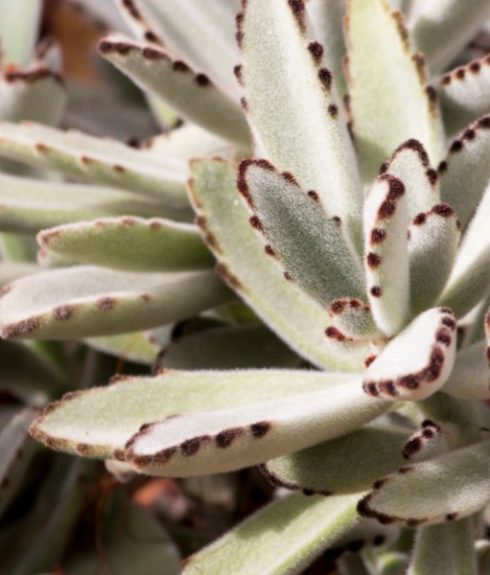
Ultimate Guide to Kalanchoe Tomentosa Care
The Panda Plant, or Kalanchoe Tomentosa, is an appealing and low-maintenance succulent that's excellent for novice gardeners. Its unique, velvety leaves are reminiscent of a panda's fur, which is the inspiration behind its name.
Zones: 9a - 12b
Sun, Shade
Acidic, Alkaline, Average, Well-Drained, Gritty
Spring, Summer
Drought Tolerant, Regular
Indoors, Outdoors
Cuttings
Cats, Dogs
ALso Known AS
Panda Plant, Chocolate Soldier, Pussy Ears, Plush Plant
Origin
Madagascar
leaf shape
Oval-shaped and covered in tiny hairs, and often feature brownish-red markings on the edges
difficulty
Great for Beginners
Kalanchoe Tomentosa, or the Panda Plant, is a striking succulent native to Madagascar. It’s characterized by its thick, oval-shaped leaves that grow up to 3.5 inches long. These leaves are covered in fine, silvery-white hairs, giving them a soft, fuzzy texture, much like the fur of a panda. The edges of the leaves are often adorned with dark brown or reddish markings, enhancing their decorative appearance.
This succulent typically grows in a sprawling manner and can reach heights of up to 2 feet, although it’s usually smaller when grown indoors. The Panda Plant rarely blooms in cultivation, but when it does, it produces small, tubular greenish-yellow flowers.
In terms of care, the Panda Plant prefers bright, indirect sunlight and well-draining soil. It’s drought-tolerant and should be watered sparingly – only when the soil is completely dry. Overwatering can lead to root rot, a common issue in succulents. It’s also sensitive to cold temperatures, so it should be kept in a warm environment, especially during winter.
The Panda Plant is not only admired for its aesthetic appeal, but also for its ease of care, making it a beloved choice for both seasoned succulent enthusiasts and newcomers to the world of indoor gardening.
Water Needs
Prefers to be dried out completely before watering and prone to root rot. Kalanchoe Tomentosa is drought tolerant.
TEMPERATURE / Hardiness
Zones: 9a - 12b
Kalanchoe tomentosa grows best at temperatures between 60°F and 75°F. Although Kalanchoe tomentosa can tolerate slightly lower or higher temperatures, it cannot tolerate frost or excessive heat.
Light
Prefers bright light, or full sun. Provide protection from the direct hot sunlight.
dormancy
The Panda Plant (Kalanchoe Tomentosa) enters a period of dormancy typically during the winter months. During this time, its growth significantly slows down, and it requires even less water than usual.
Size
Can reach up to 1.5 to 2 feet (45 to 60 cm) in height when fully mature
Toxicity
CatsDogsKalanchoe Tomentosa is poisonous if ingested. Use caution around pets. Panda plants produce calcium oxalate crystals in their leaves that can cause oral irritation, drooling, vomiting, and difficulty swallowing.
flowers
SpringSummerThe flowers of the kalanchoe panda plants are bell-shaped and yellow-green with dark brown tips. Flowers of the panda plant have a velvety appearance similar to the leaves, with short velvet hairs covering them. Panda plants rarely bloom indoors, but if they do, they will bloom during spring and summer.
Soil
It thrives best in well-draining, sandy soil that mimics its natural arid habitat. Proper soil selection is crucial for preventing root rot and ensuring the overall health and growth of your Panda Plant.
Feeding
Kalanchoe tomentosa plants should be fed diluted fertilizer recommended for succulents, once a month from spring until the middle of summer. Don't fertilize in late summer when the plant is dormant. It's not necessary to fertilize during the winter months.
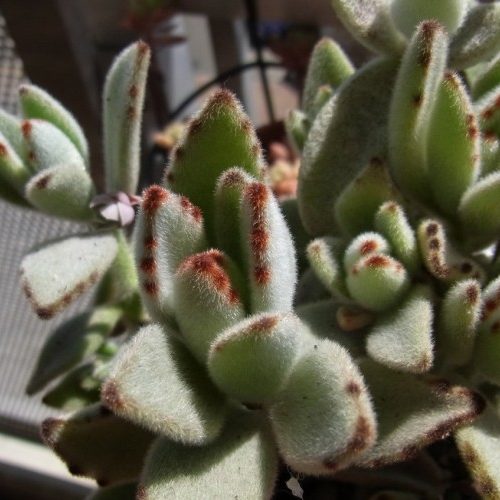
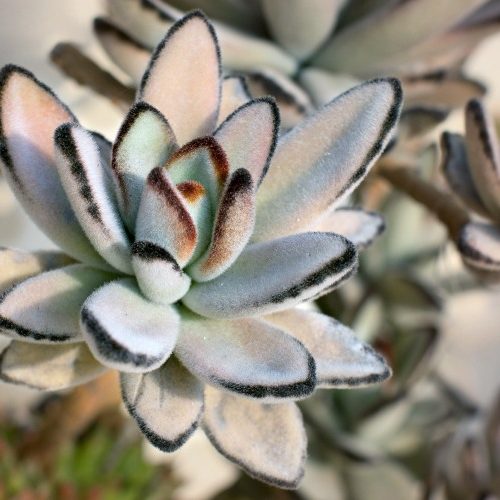
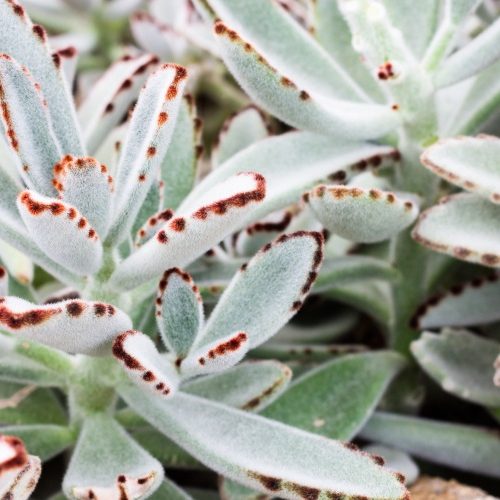
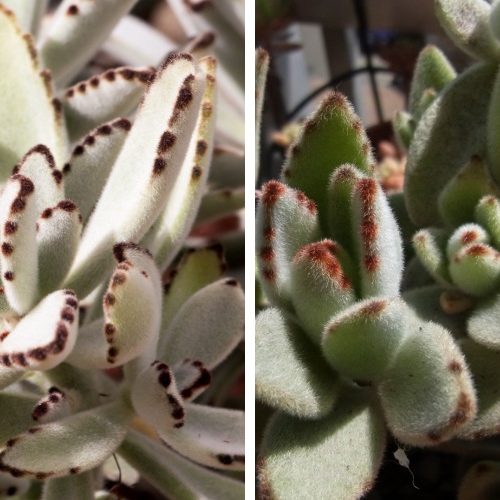
how do you propagate Kalanchoe Tomentosa?
propagated from:
CuttingsPropagating the Panda Plant, or Kalanchoe Tomentosa, is quite straightforward. Begin by choosing a healthy and fully grown leaf, ensuring it is undamaged. Carefully twist it off from the stem, aiming for a clean separation. Once removed, allow the leaf to dry in a warm, dry spot out of direct sunlight for several days, enabling the end where it was attached to form a callous.
Place the calloused leaf on top of the succulent or cactus mix soil that drains well, making sure it makes contact but isn't buried. Gently mist the soil to keep it slightly moist, avoiding overwatering, and place the pot in a bright area with indirect light. After a few weeks, you'll notice new roots and leaves beginning to form. Once the new plant is stable and growing, care for it as you would a mature Panda Plant.
FAQ
Frequently asked questions about Kalanchoe Tomentosa

How Often Should I Water My Kalanchoe Tomentosa?
The watering needs of the Panda Plant vary based on environmental conditions and seasonal changes. Typically, during its growth phase in spring and summer, watering every 2-3 weeks is sufficient. In winter, when the plant is dormant, it requires even less water. It's crucial to let the soil dry out thoroughly before watering again. To prevent root rot, a common issue caused by overwatering, it's advisable to lean towards underwatering rather than giving it too much water.

Does the Panda Plant Need Direct Sunlight?
The Panda Plant prefers bright, indirect sunlight. While it can tolerate some direct sunlight, too much can scorch its leaves, especially the delicate fuzzy ones. A spot near a window that receives filtered light or a few hours of mild morning sun is ideal. If the plant is not getting enough light, it may become leggy as it stretches towards the light source.
Similar Topics in: Crassulaceae, Kalanchoe, Sedoideae